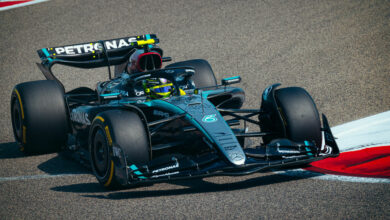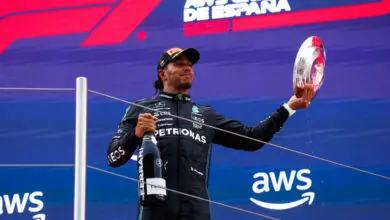The FIA Reinstates Maximum Time Limit Rule for F1 Qualifying at Japanese Grand Prix
Enhancing Safety and Fairness: Drivers Must Abide by New Time Limit Regulations
In a pivotal development aimed at enhancing the safety and fairness of Formula 1 qualifying sessions, the FIA (Fédération Internationale de l’Automobile) has announced the reintroduction of the maximum time limit rule. This rule will be in effect for all Formula 1 qualifying laps during the upcoming Japanese Grand Prix weekend. Under this regulation, drivers will be obligated to adhere to a specific maximum lap time not only during the official qualifying laps but also during the reconnaissance laps preceding the Grand Prix.
The decision to reinstate this rule follows a series of serious impeding incidents that marred the Singapore Grand Prix qualifying session held just last weekend. During that event, Max Verstappen, the reigning world champion, found himself on the receiving end of two warnings for impeding other drivers. Furthermore, Red Bull Racing, his team, was fined €5000 as a consequence of these violations.
To evaluate the efficacy of the maximum time limit rule, a trial run was conducted during the qualifying session of the Italian Grand Prix. During this trial, the rule applied not only to the official qualifying laps but also to the reconnaissance laps, aimed at preventing impeding and dangerous driving incidents. This experimental approach yielded promising results, as no incidents of impeding were reported throughout the qualifying session.
However, the absence of this rule during the Singapore Grand Prix weekend led to confusion, especially during the first qualifying session (Q1), when nearly half of the field jostled for track position in the final sector. This chaotic scenario underscored the necessity of having a well-defined rule in place to maintain order and fairness during the qualification process.
Niels Wittich, the Race Director for Formula 1, elaborated on the governing body’s efforts to combat impeding incidents during qualifying. He emphasized that F1 drivers and their respective teams would receive notification of the maximum lap time limit after the second practice session. Any driver found exceeding this limit during qualifying laps could potentially face penalties.
“In order to ensure that cars are not driven unnecessarily slowly on in laps during and after the end of qualifying or during reconnaissance laps when the pit exit is opened for the race, drivers must stay below the maximum time set by the FIA between the Safety Car lines shown on the pit lane map.
“For the safe and orderly conduct of the event, other than in exceptional circumstances accepted as such by the stewards, any driver that exceeds the maximum time from the second Safety Car line to the first Safety Car line on ANY lap during and after the end of the qualifying session, including in-laps and out-laps, may be deemed to be going unnecessarily slowly.”
Notably, during the trial run at the Italian Grand Prix, both Charles Leclerc and Carlos Sainz, drivers for the Ferrari team, were found to be slower than the prescribed time limit. However, upon investigation, it was determined that neither of the Ferrari drivers would face penalties. This leniency was granted because they had conscientiously allowed faster cars to pass them safely, demonstrating their commitment to fair and safe racing.


